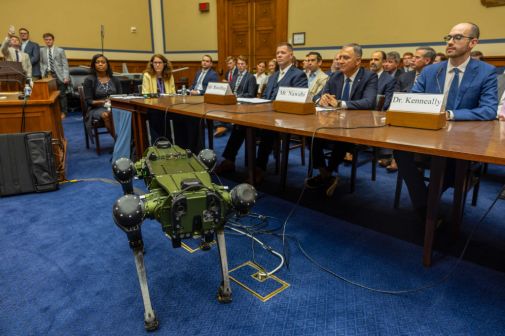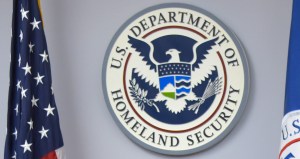DHS funds smart shirts for first responders

A shirt that collects first responders’ vital signs and transmits them to headquarters could become standard equipment for police and firefighters thanks to funding from the Department of Homeland Security’s Science and Technology Directorate.
Two Canadian companies — Calgary-based data company SensorUp and Montreal-based wearable manufacturers Hexoskin — have partnered to create a system that monitors first responders’ vitals via an Internet-connected shirt.
Hexoskin CEO Pierre-Alexandre Fournier told FedScoop he sees this technology as a complement to body cameras and other remote sensors first responders might carry.
“With a camera, you can see what a responder is seeing, but you don’t know how they are feeling,” Fournier said. “You don’t see if they are exhausted. You don’t see if they are hurt in any way. With our shirts, you get information about that.”
Hexoskin shirts are used by professional athletes and personal trainers to monitor workout routines by measuring heart rate, breathing rate and steps. The partnership would allow emergency teams to monitor a fleet of responders in real time through SensorUp’s data exchange platform, which is specifically tailored for the Internet of Things.

Hexoskin’s smart shirts connect to a device first responders could slip into their pocket. (Hexoskin)
The shirt, reminiscent of base-layer workout gear sold by Under Armour or Nike, is equipped with sensors embedded into the fabric. The sensors connect via wires to a small module that first responders could slip into a pocket and wirelessly transfer data back to a central hub.
Hexoskin shirts are already being used in Dubai, where the company partnered with Cisco to measure police officers’ vital signs during the city’s brutally hot days.
This type of technology is something DHS has been clamoring for over the past 18 months. In late 2014, the office attempted to spur a “national conversation” on what the next generation of first responders would look like.
“The long-term vision is that fully aware, fully connected, fully integrated responder,” S&T Deputy Endersecretary Robert Griffin said at a 2014 mobile technology conference. “We recognize that it could take us 20 to 30 years, maybe longer to get there. It’s not just a technology issue, it’s usage, it’s operating procedures, it’s governance, training. It’s part of the whole continuum we need to think about.”
Griffin’s boss, Reginald Brothers, saw firsthand the technology demonstrated earlier this month during an event examining interoperable standards in the Internet of Things ecosystem.
“I was impressed with the ‘state of the practical’ where these various industry sensors can be integrated today using open standards that remove the stovepipe limitations of one-off technologies,” he wrote in a Jan. 28 blog post.
Fournier said the demonstration was “powerful” in showing how the IoT can keep first responders safe.
“By providing real-time access to a first responder’s biometric data, managers can monitor their teams to prevent otherwise avoidable incidents, enabling first responders to perform in their most effective state in even the most critical situations,” he said.
Contact the reporter on this story via email at greg.otto@fedscoop.com, or follow him on Twitter at @gregotto. His OTR and PGP info can be found here. Subscribe to the Daily Scoop for stories like this in your inbox every morning by signing up here: fdscp.com/sign-me-on.






